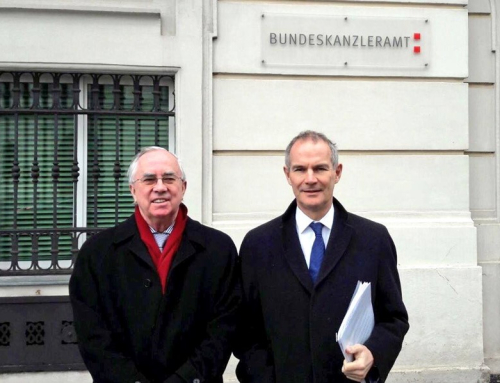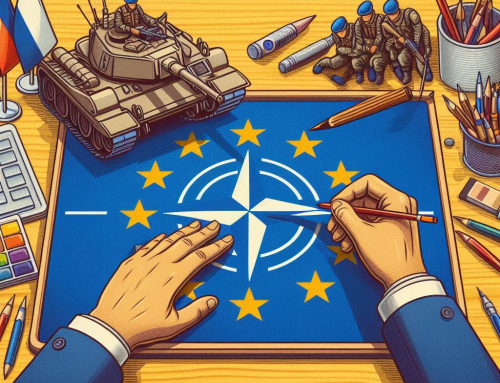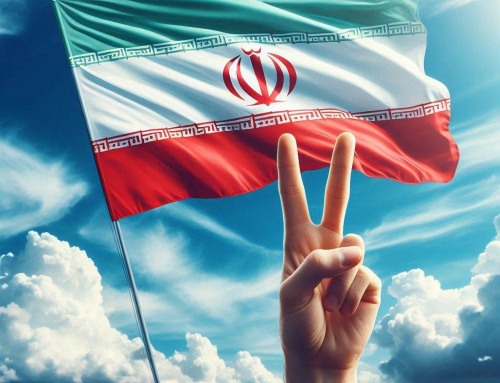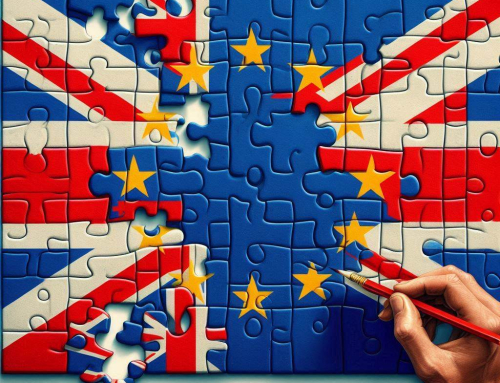
Background and rationale
In 1988, the Austrian Foreign Ministry conducted a brainstorming inviting all its diplomatic staff to provide ideas for a Middle East peace formula. The Two-State-SoIution inherently infers antagonism between both sides. By contrast, a Confederation would find its centre of gravity in cooperation. The geographic space is too small to separate the land into a two-state-construct, besides Israeli Prime Minister Netanjahu has never favored at two-state-solution, despite some positive statements, primarily under American and international pressure. The alternative – often cited – would consist of a unitary state where Israeli and Palestinians live together with the inherent danger that Israel would loose his existence of a “Jewish State”.
Currently, politicians are searching for a viable post-war set-up. The shock and disruptive depth of the current war create opportunities for a proposal „outside the box“ („never miss the opportunity of a crisis to forge something new“).
Favourable factors
- Since the Six-Day-War of 1967, Israelis and Palestinians are closely intertwined.
- In the Palestinian Territories, the Shekel is used as currency; telephone networks are those of Israeli providers. Street signs in Israel have always been trilingual. Gaza depends on water and electricity supplied from Israel. There are many other practical day-to-day links.
- Israelis and Palestinians have come to know each other’s societies more intimately than those of their Arab neighbours. They have commercial ties with each other; learning Arabic is part of the Israeli curriculum; numerous Palestinians have taught themselves Hebrew.
- One fifth of the Israeli population consists of Israeli Arabs; some see themselves as second-class citizens, but I have also seen Israeli Arabs at the Hebrew University in Mount Scopus and even as Israeli Army officers; the massacres of 7 October 2023 included Israeli Arab and Bedouin victims as well as heroic saviors of lives from within their ranks.
- There are more examples of cooperation than are often visible in the news. The Red Star of David and the Red Crescent organizations help each other out. Orchestras and civil society initiatives include both communities. Traders trade with each other. Israelis employ Palestinians, from manual workers to specialists in IT start-ups. Israeli Arab taxi drivers take passengers to and from the Palestinian Territories. Palestinian patients are treated in Israeli hospitals, by Jewish and Muslim doctors.
- Opinions in both communities on the viability of a Two-State-Solution are divided. A segment of Israeli society opposes it. Increasingly, voices on both sides favour a Single-State-SoIution, but this opens the questions of dominance and of State identity. Where public opinion will go after the current war, is unknown. This current limbo provides a „window of opportunity“ to inject the idea of a Confederation as a new vision for the post-war future.
- A Confederation would establish a single internal market, beneficial for the economies of both, not least the employment rates of young Palestinians. Palestinian companies could offer their goods and services across the internal market; Israeli products could circulate more freely into the Palestinian Entity; Israeli produce originating in settlements would no longer be discriminated against on third markets. Should the Confederation become the basis for a wider recognition of Israel as its Jewish entity, Israeli trade with Arab countries could flourish without third party intermediates.
- Both sides see Jerusalem as their natural capital. The city could remain united. A new „Berlin Wall“ will be avoided. Just like the Federal Belgian and Flemish Governments have their (separate) seats in Brussels, both Entities would house some of their government institutions in Jerusalem, with secondary institutions and agencies in their own areas, similar to German institutions in Berlin as well as Bonn.
- Alike the former Austro-Hungarian Empire, joint competences would be few, such as foreign policy and internal security coordination between Entity police forces. Joint ministries might also need to deal with water management, internal trade, economic development and the environment.
- Military security could remain entirely in Israeli hands, given the shallow strategic depth of the land and Israeli security needs.
- For some tasks, Federal institutions would avoid duplication and improve economies of scale (e.g., meteorological agency helping farmers, the civil aviation authority, etc.).
- The „Abraham Accords“ have opened the potential for a wider normalisation between Arab neighbours and Israel, as long as the „Palestinian issue“ can be resolved. A Confederation might achieve that better than the Two-State-SoIution.
- Arab neighbouring countries aspire to have access to Israeli technology and innovation.
- The terrorist organisations Hamas and Hezbollah are largely discredited not only in the eyes of the West, but also of Arab countries (notwithstanding the stance of Qatar). Sympathy has been forthcoming only from Turkey (President Erdogan), Iran and Yemen.
- The right-wing Netanyahu government is discredited und hardly popular anymore. Should the Confederation idea gain traction, this could isolate the radicalizing settler movement.
Unfavourable factors
- Religious fervor (Islamist as well as settler ideologies).
- Historical narratives (Zionist versus Palestinian victimhood).
- Traumatic experience of the 7 October 2023 massacres and ongoing Israel-Hamas war.
- Scarcity of (new) political leadership able to espouse the Confederation idea.
- In contrast to earlier days, when older generations of Palestinians and Israelis could build personal relations and travel more freely, since the Security Barrier and the Gaza fence have cordoned off the Palestinian territories, such personal acquaintances have diminished.
- United Nations‘ bias against Israel (strings of one-sided resolutions against Israel; anachronism of UNRWA still supporting „refugee camps“ for descendent generations of 1948 (!) refugees, which are a hotbed of anti-Israeli hatred; millions of refugees from other conflicts in the 1940s – e.g. post-Second-World-War in 1945/46 Europe or after Indian Partition in 1947 – have long been integrated into receiving communities; problematic curricular material at UN-run schools), rendering third-country support more doubtful.
- Power gradient between Israel and the Palestinian Territories.
- The machinations of Iran in support of Hamas and Hezbollah; Tehran’s collusion with Russia to promote a „new world order“.
Conclusion
The tragedy of the situation lies primarily in the lack on both sides to build up at least a minimum of mutual trust. A trust which would favor on the one side the predictability of the intentions of the “other side”, thereby contributing to Israel’s sense of security, and on the other alleviating the plight of the Palestinians by practical steps. All these was tried with some remarkable success in the nineties of last century, when in the wake of the Oslo-Accord, Israeli und Palestinians interlocutors came together and, under international participation and pressure, tried to hammer out some kind of understanding in working groups dealing with water issues, refugees, economic cooperation, energy and the like.
These talks were conducted in a constructive manner and with some sort of political willingness to come to some sort of understanding. Primarily, this exercise proofed to be an adequate example to build up mutual trust “bottom-up”, as a prerequisite to map out any ideas of a “grand-design” “of the common future “top-down”. Sadly, all these efforts were thwarted by the so called second intifada of the Palestinians in 2000.
Prospects, especially after 7 October 2023 are dim, but eternal optimists may see a chance for some positive developments, once the present phase of armed conflict is over. Perhaps then, the idea of a CONFEDERATION may allow some basic consideration by both sides.





